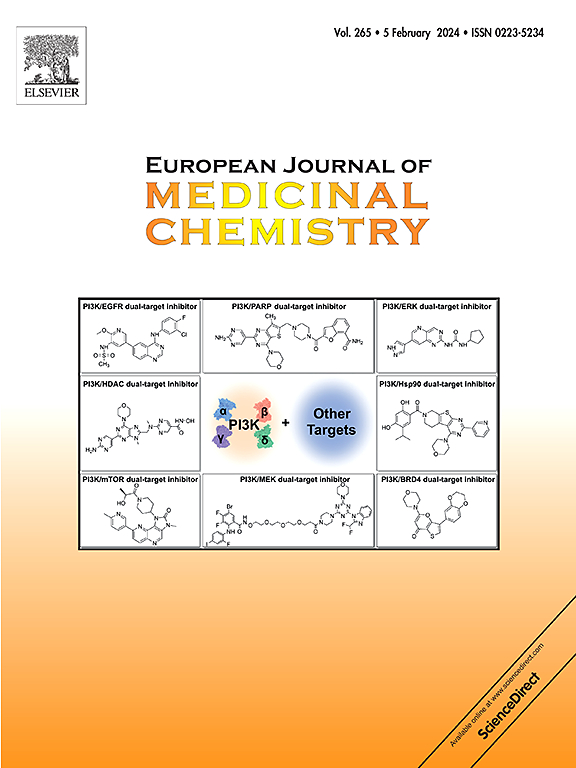Design, synthesis, and activity evaluation of novel STING inhibitors based on C170 and H151
IF 6
2区 医学
Q1 CHEMISTRY, MEDICINAL
引用次数: 0
Abstract
Stimulating the STING signaling pathway for immune system activation is considered a promising strategy for cancer treatment. However, activating the STING pathway can lead to adverse effects, as aberrant activation or specific mutations in STING may result in autoimmune and inflammatory diseases. Therefore, the development of STING inhibitors is equally important. In this study, we first introduced hydroxyl groups into the STING inhibitors C170 and H151, creating functional sites for further modification. Then the introduction of various substituents resulted in the identification of more potent inhibitors, Y2 and HY2, which effectively suppressed the activation of the STING pathway in THP1 and RAW264.7 cells. Compounds Y2 and HY2 demonstrated potent anti-inflammatory effects in mice cisplatin-induced acute kidney injury models by inhibiting the STING pathway. Collectively, Y2 and HY2 warrant further investigation as novel anti-inflammatory agents.


求助全文
约1分钟内获得全文
求助全文
来源期刊
CiteScore
11.70
自引率
9.00%
发文量
863
审稿时长
29 days
期刊介绍:
The European Journal of Medicinal Chemistry is a global journal that publishes studies on all aspects of medicinal chemistry. It provides a medium for publication of original papers and also welcomes critical review papers.
A typical paper would report on the organic synthesis, characterization and pharmacological evaluation of compounds. Other topics of interest are drug design, QSAR, molecular modeling, drug-receptor interactions, molecular aspects of drug metabolism, prodrug synthesis and drug targeting. The journal expects manuscripts to present the rational for a study, provide insight into the design of compounds or understanding of mechanism, or clarify the targets.

 求助内容:
求助内容: 应助结果提醒方式:
应助结果提醒方式:


